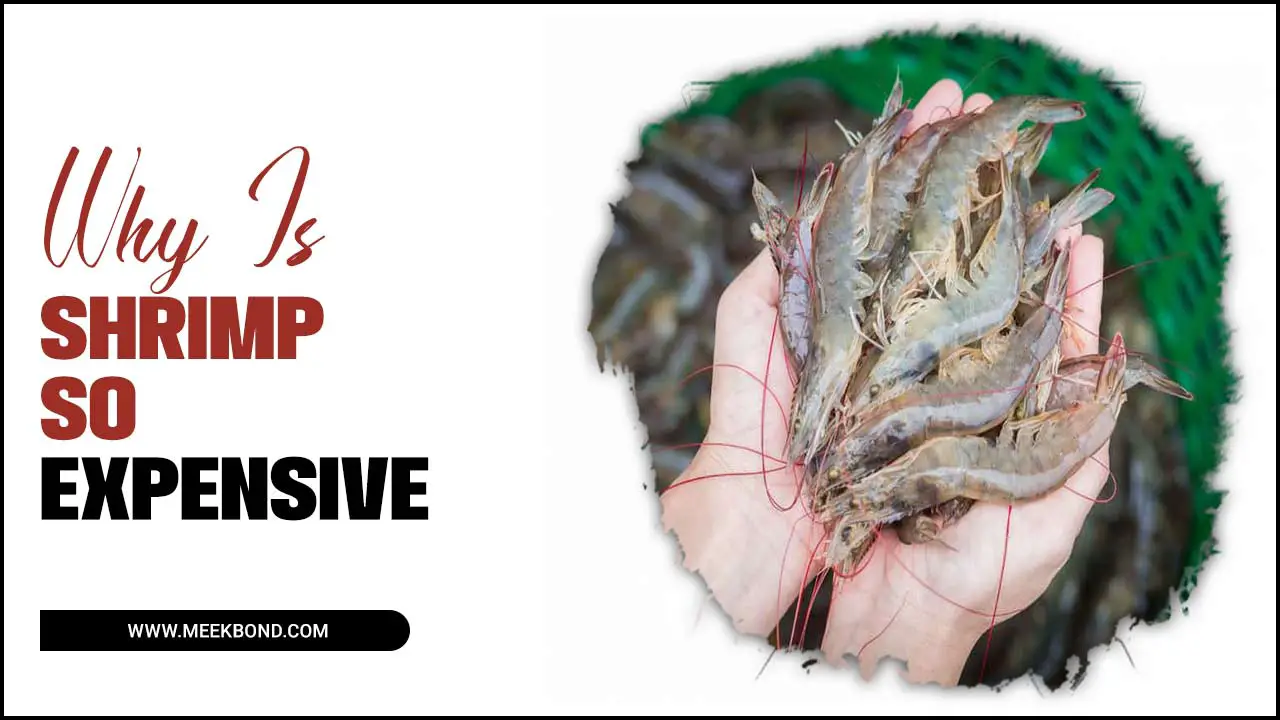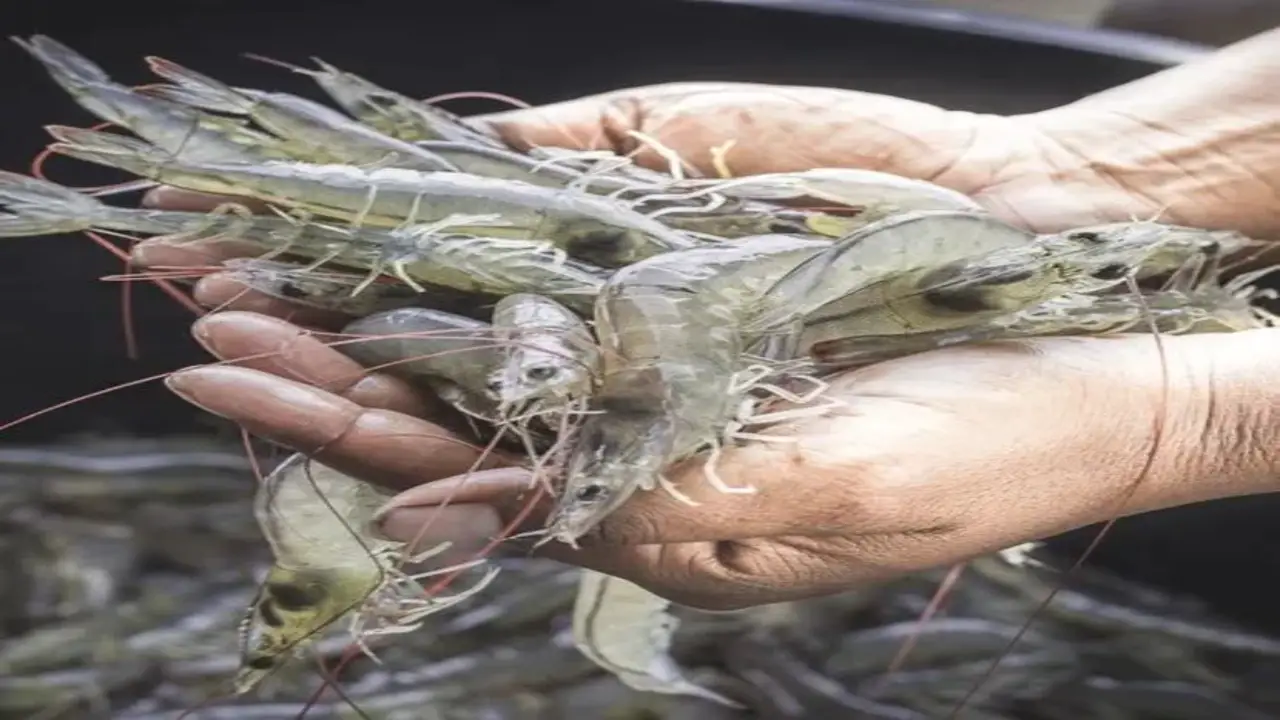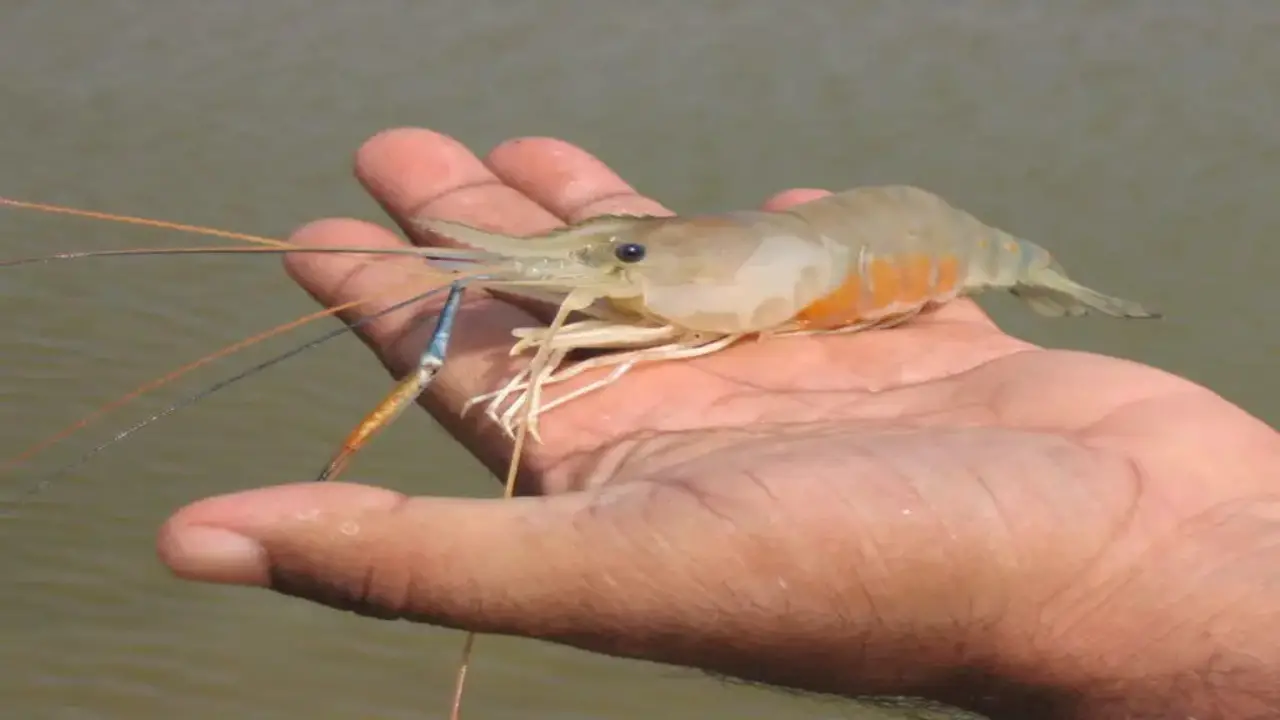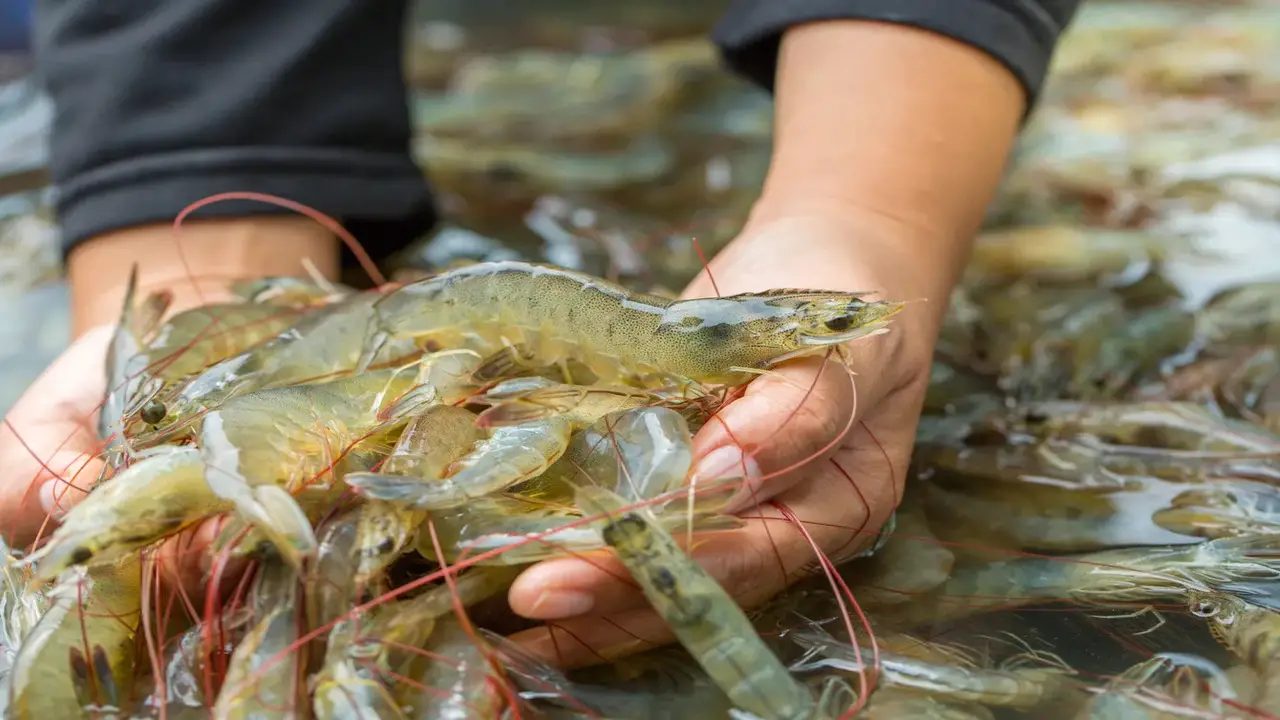Shrimp is one of the most popular seafood items in the world. It’s prized for its delicate flavour, tender texture, and versatility in cooking. Despite its popularity, shrimp can be surprisingly expensive.
In fact, it’s not uncommon for shrimp to cost more per pound than many types of fish or even beef. This raises the question: Why is shrimp so expensive? The answer is multifaceted and goes beyond simple supply and demand. Factors such as production costs, environmental regulations, and international trade policies all play a role in driving up the cost of shrimp.
Here we’ll explore the factors contributing to the high cost of shrimp and some of the industry’s challenges. We’ll look at the impact of things like climate change and pollution on shrimp populations, as well as the complex supply chains and trade relationships that govern the global shrimp market.

Examining The Factors Behind Why Is Shrimp So Expensive?

A variety of factors can influence the price of shrimp. One major factor is the cost of production. Shrimp farming requires significant resources, including land, water, and feed. Additionally, shrimp are susceptible to disease and require careful management and monitoring, which can further increase production costs. Another factor that affects the price of shrimp is the demand for it.
Shrimp is a popular seafood choice worldwide, and as demand increases, so does the price. Additionally, environmental factors such as natural disasters or changes in water temperature can impact shrimp populations and lead to fluctuations in price. Finally, transportation costs also play a role in the overall price of shrimp. Here details to know why is shrimp so expensive.
High Demand And Limited Supply
The popularity of shrimp as the most sought-after seafood globally has led to its high demand and, subsequently, higher prices. Overfishing and environmental conditions contribute to the scarcity of shrimp in the market. Additionally, shrimp farms require significant investments in infrastructure and feed, making the production costlier.
Regulations on catching shrimp in certain regions further add to the production cost. Moreover, transportation costs, especially when importing from overseas, contribute to the overall high price of shrimp. These factors combined create a scenario of high demand and limited supply, resulting in the expensive nature of shrimp.
Environmental Factors Impacting Shrimp Populations

The delicate balance of environmental factors greatly influences the population of shrimp. Climate change and ocean acidification have caused significant alterations in shrimp habitats, disrupting their natural ecosystem. Overfishing and unsustainable fishing practices have further contributed to the decline in shrimp populations.
Shrimp farming, although it meets the demand for seafood, can also cause damage to the environment and impact the population of wild shrimp. Regulations and policies implemented to protect shrimp populations can unintentionally drive up prices. The growing demand for shrimp intensifies the pressure on already dwindling populations.
The Cost Of Shrimp Farming And Production
Shrimp farming and production require significant resources and investment. The cost of feed, labour, and energy also contribute to the expense. Disease outbreaks and environmental factors can lower yields and increase costs. Additionally, high demand and limited supply make shrimp expensive.
However, sustainable practices and technological advancements can potentially reduce production costs. By implementing efficient aquaculture methods and improving the supply chain, we can optimize the overall cost of shrimp production without compromising the quality and sustainability of this popular seafood, making it more affordable.
Transportation And Logistics Costs For Importing Shrimp
Transportation and logistics costs play a significant role in the expensive nature of shrimp. Since shrimp are often imported from other countries, these costs are added to the final price. The cost of transportation can vary depending on factors such as distance and mode of transportation used.
Fuel prices and trade policies also impact transportation costs. Additionally, maintaining quality and freshness during transportation adds to the overall expense. Consumers eventually bear these costs, making shrimp pricier than other seafood options. The supply chain importing shrimp from Asia further contributes to the high cost.
Quality Control Measures And Certifications That Increase Prices

Quality control measures and certifications ensure sustainable and ethical shrimp farming practices. ASC (Aquaculture Stewardship Council) and BAP (Best Aquaculture Practices) certifications assure consumers that the shrimp producers have produced them in an environmentally friendly and socially responsible manner. However, these measures come at a cost.
Implementing and maintaining quality control measures and obtaining certifications require additional resources, which ultimately contribute to the higher price of shrimp. Moreover, shrimp farming is a labour-intensive process requiring skilled workers, further reducing production costs. The global demand for shrimp has increased significantly, leading to higher prices due to supply and demand economics principles. Climate change and natural disasters can influence price fluctuations by impacting shrimp production.
Labor Costs Associated With Shrimp Harvesting And Processing
However, several factors contribute to the expensive cost of shrimp. One major factor is the labor costs associated with shrimp harvesting and processing. Shrimp are typically caught using small fishing boats or trawlers, and catching and sorting shrimp can be labor-intensive.
Additionally, shrimp farming requires significant labor and resources, including maintaining ponds or tanks, feeding and caring for the shrimp, and harvesting them when they reach maturity. These labor costs, combined with other factors such as transportation and packaging, all contribute to the overall expense of shrimp.
Currency Exchange Rates Affecting The Price Of Imported Shrimp
One key factor influencing the price of imported shrimp is currency exchange rates. The fluctuation in exchange rates can significantly impact the cost of shrimp. When there is a favorable exchange rate, imported shrimp prices become cheaper. On the other hand, when the exchange rate is unfavorable, it can drastically increase the price of shrimp.
The US dollar’s value and major shrimp-producing countries’ currencies are crucial in determining the price. Additionally, political instability and economic trends in these countries can cause currency fluctuations, further affecting the price of shrimp. Furthermore, increased demand for shrimp in specific regions or seasons can exacerbate the effect of currency exchange rates on prices.
Market Trends And Consumer Preferences Driving Up Demand For Shrimp

Several factors contribute to the high price of shrimp. One major factor is market trends and consumer preferences. Shrimp, domestically and internationally, is a highly sought-after seafood item driving demand. As demand increases, so does the price. Additionally, shrimp farming and harvesting can be complex and labor-intensive, requiring specialized equipment and expertise.
This can also drive up the cost of production, which is then passed on to the consumer. Lastly, environmental factors such as natural disasters and climate change can impact shrimp populations, leading to fluctuations in supply and further driving up prices. Overall, a combination of market trends, production costs, and environmental factors contribute to the high price of shrimp.
Government Regulations And Policies Impacting The Shrimp Industry
Government regulations and policies play a crucial role in shaping the shrimp industry. They are designed to protect the environment and ensure sustainable fishing practices. However, these regulations can also increase operating costs for shrimp farmers.
Additionally, certain countries may impose tariffs or import bans on shrimp, which can significantly impact the global supply and demand dynamics. Some countries ‘ government subsidies to shrimp producers can distort the market and affect prices. Moreover, shrimp disease outbreaks can lead to government-imposed quarantine and trade restrictions, further affecting the supply and prices of shrimp.
Conclusion
Shrimp can be quite expensive for a variety of reasons. One factor is the high demand for shrimp, both domestically and internationally. Shrimp is a popular seafood choice, leading to increased competition and potentially driving up prices.
The high cost of shrimp can be attributed to a combination of factors. The demand for shrimp is constantly increasing, while the supply is limited due to environmental factors and regulations. Shrimp farming and production also incur significant costs, and transportation and logistics expenses for importing shrimp add to the overall price.
Quality control measures and certifications increase prices, as do labour costs and currency exchange rates. Additionally, market trends and consumer preferences play a role in driving up demand for shrimp. Understanding these factors can help us appreciate why is shrimp so expensive and make informed choices when purchasing seafood.
Frequently Asked Questions
How To Make Money From Shrimp Breeding In Aquarium?
Earn a profit from breeding shrimp in your aquarium by researching the necessary equipment, selecting suitable shrimp species, and creating an optimal breeding environment. Market your high-quality, sustainable shrimp to attract potential buyers.
How Do I Cook Shrimp Without Cooking The Whole Thing In One Go?
To cook shrimp without cooking the whole batch at once, you can use a steamer basket or colander and cook them in batches. Boil the shrimp for 2-3 minutes until they turn pink and opaque, or grill/sauté them for 2-3 minutes per side until cooked through. Marinating the shrimp before cooking can also add flavour and prevent overcooking.
How Can I Save Money On Shrimp?
To save money on shrimp, consider buying frozen instead of fresh, as it is usually cheaper. Look for sales and discounts at your local grocery store or seafood market. Buying larger quantities and freezing what you don’t need immediately can also help. Additionally, opting for shrimp in the shell rather than peeled tends to be less expensive.
Is There A Difference Between Farm-Raised And Wild-Caught Shrimp?
Farm-raised and wild-caught shrimp do differ. Farm-raised shrimp are raised in controlled environments with specific diets. On the other hand, wild-caught shrimp are caught in their natural habitats, resulting in potential differences in taste and texture. The cost of wild-caught shrimp is generally higher due to the additional resources required for harvesting.
Which Is More Expensive, Prawn Or Shrimp?
Shrimp are less expensive than prawns, so don’t feel the need to splurge the next time you plan a shrimp boil.

Aquarium passion is all about connecting with the aquatic life and providing education to the public on the importance of these creatures. We showcase a wide variety of marine life through our exhibits as well as working with schools to provide unique learning opportunities for students of all ages.








